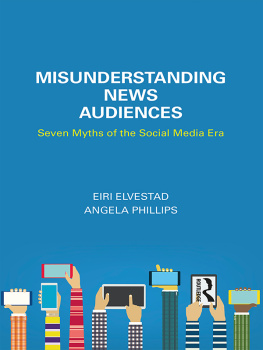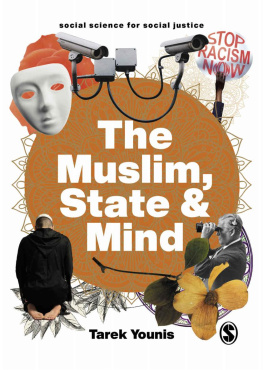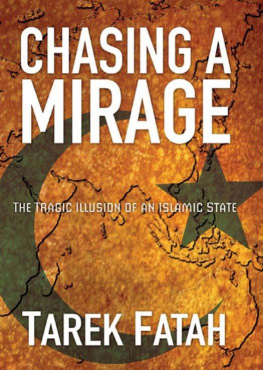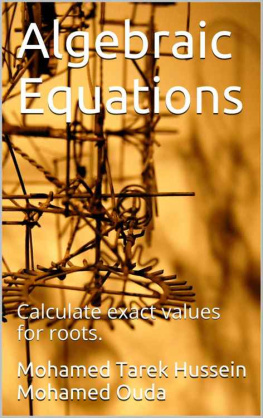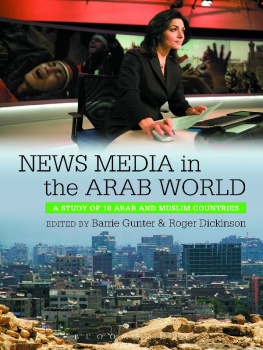Tarek Cherkaoui here provides an excellent analysis of media coverage of the Iraq War focusing primarily on the coverage of CNNI and Al Jazeera. His book is strongly and clearly written, grounded in scholarly research, and provides a close reading of the ways in which the two networks present the 2003 Iraq War.
Douglas Kellner, George F. Kneller Chair in the Philosophy of Education, UCLA
Tarek Cherkaouis book is an original scholarly work that backs its arguments with sound research methods and good empirical evidence. This book is a very welcome contribution to Arab media studies and a must-read for scholars and students working on propaganda, war coverage and the sociology/politics of news.
Tarik Sabry, Reader in Media and Communication Theory, University of Westminster
Published in 2017 by
I.B.Tauris & Co. Ltd
London New York
www.ibtauris.com
Copyright 2017 Tarek Cherkaoui
The right of Tarek Cherkaoui to be identified as the author of this work has been asserted by the author in accordance with the Copyright, Designs and Patents Act 1988.
All rights reserved. Except for brief quotations in a review, this book, or any part thereof, may not be reproduced, stored in or introduced into a retrieval system, or transmitted, in any form or by any means, electronic, mechanical, photocopying, recording or otherwise, without the prior written permission of the publisher.
Every attempt has been made to gain permission for the use of the images in this book. Any omissions will be rectified in future editions.
References to websites were correct at the time of writing.
Library of Modern Middle East Studies 125
ISBN: 978 1 78076 104 6
eISBN: 978 1 78672 143 3
ePDF: 978 1 78673 143 2
A full CIP record for this book is available from the British Library
A full CIP record is available from the Library of Congress
Library of Congress Catalog Card Number: available
List of Illustrations
Figures
Information warfare and environment shaping (Dearth 2002: 8).
Real-time footage of CNN and Al Jazeera during Shock and Awe (21 March 2003).
CNN headline during Shock and Awe (21 March 2003).
Footage of CNN and Al Jazeera after the 8 April 2003 bombings in Baghdad (8 April 2003).
Al Jazeera broadcasting footage via Abu Dhabi TV showing its crew members carrying the late correspondent Tareq Ayyoob (8 April 2003).
Al Jazeera airing Tareq Ayyoobs last report to commemorate his memory (8 April 2003).
Al Jazeeras footage showing a wide shot of the tank which targeted the hotel (8 April 2003).
Footage of CNN and Al Jazeera showing the toppling of Saddams statue (9 April 2003).
Al Jazeera footage showing the American flag on the top of the Saddam statue (9 April 2003 10:41 ET).
Table
Table comparing the terminologies used by CNN and Al Jazeera during Shock and Awe.
Introduction
The eye sees only what the mind is prepared to comprehend.
Robertson Davies
In the opening months of 2011, a series of uprisings shook the Arab world and took observers by surprise. This wave of demonstrations, protests, and riots began on 18 December 2010 in Tunisia with the self-immolation of Mohamed Bouazizi, and immediately spread throughout the Arab countries, resulting in civil uprisings in Egypt and Bahrain, large street demonstrations in Algeria, Iraq, Jordan, Kuwait, Morocco, Yemen, and Oman, and minor protests even in Saudi Arabia. These dynamics soon led to major insurgencies in Libya, Syria, and Yemen.
The Arab Spring, as it was subsequently coined, turned into a defining moment in the history of the region. For not only were these uprisings momentous, contagious and successive, but they were also deeply infused and instigated by media and communication to the extent that several researchers and pundits labelled these episodes Facebook uprisings and Twitter revolutions. These were, however, no sudden occurrences that happened overnight. In fact, complex dynamics with deep-seated and multi-layered political, economic, social, and historic roots all came into play as a trigger to these events.
Among the key developments that have undeniably played a big role in this context is the evolution of Arabic news satellite broadcasting, most notably the Qatar-based news outlet Al Jazeera. Since its inception, the latter has contributed to energising the Arab public sphere, and constituted a nail in the coffin of the oppressive regimes in the Middle East and North Africa region (MENA) since the mid-1990s. In that era, it was virtually impossible for opposition figures to make their views known to a wide audience, but satellite news outlets allowed them to bypass the barren and restrictive state media, connect with their communities, challenge the official discourse, and expose the regimes abuses and lack of legitimacy. The challenge to Arab dictators, such as Hosni Mubarak in Egypt and Zine al-Abedine Ben Ali in Tunisia, to name a few, started in fact from that period, and slowly but surely shook the foundations of these regimes and eroded their legitimacy.
In effect, the Arab Spring at least initially channelled energies for change within MENA, and was by large perceived as a historic moment, comparable in its magnitude to the events that took place in Eastern Europe at the end of the Cold War during the early 1990s. Several media outlets, both pan-Arab and international, generally helped convey the human dimension of these events, airing the emotions and expectations of Arab Spring participants to millions of their fellow Arab and international viewers in their living rooms. Such coverage overturned initially at least a host of stereotypes about the Arab region, particularly in the West, by revealing the commitment of Arab masses to a peaceful transition to power, civic rights, democratic accountability, checks on the power of leaders, and the establishment of a just and fair governance system.
However, as time passed and the internal crises worsened, Arab regimes built internal and external coalitions, who then fought back violently. These regimes managed to deteriorate the situation by using a mix of coups dtat, counter-revolutionary movements, false-flag terrorist groups, and extended repressive means, while also in some cases, as in the Gulf Cooperation Council (GCC) region providing economic handouts, patronage, and introducing limited political and economic reforms.constructed in the Western psyche for centuries as a beacon of violence, intolerance, and backwardness, gained further traction and reinforced the fundamental gap in worldview, perception, and communication between the West and the Arab world; a trend which has been undeniably exacerbated since the suicide attacks of September 11 2001 (9/11).
The re-alignment of the United States and several of its European key allies in their approach towards the MENA region was not initiated at this juncture. In reality, the transformation of their strategic posture was detected as early as the Gulf War in 1991. On the other hand, the 9/11 suicide attacks constituted the perfect justification for several power centres within the United States, and chiefly those influenced by neo-conservatives forces, to accelerate that process, while also reshaping the American state identity, and reinforcing a Western common identity. For this purpose, vitriolic rhetoric, emanating now and again from the top of the US administration (as during the George W. Bush presidency) and from key figures of US politics (e.g. Donald Trump), frequently uses Islam and Arabs as the quintessential other, or the touchstone against which the state identity is measured.


